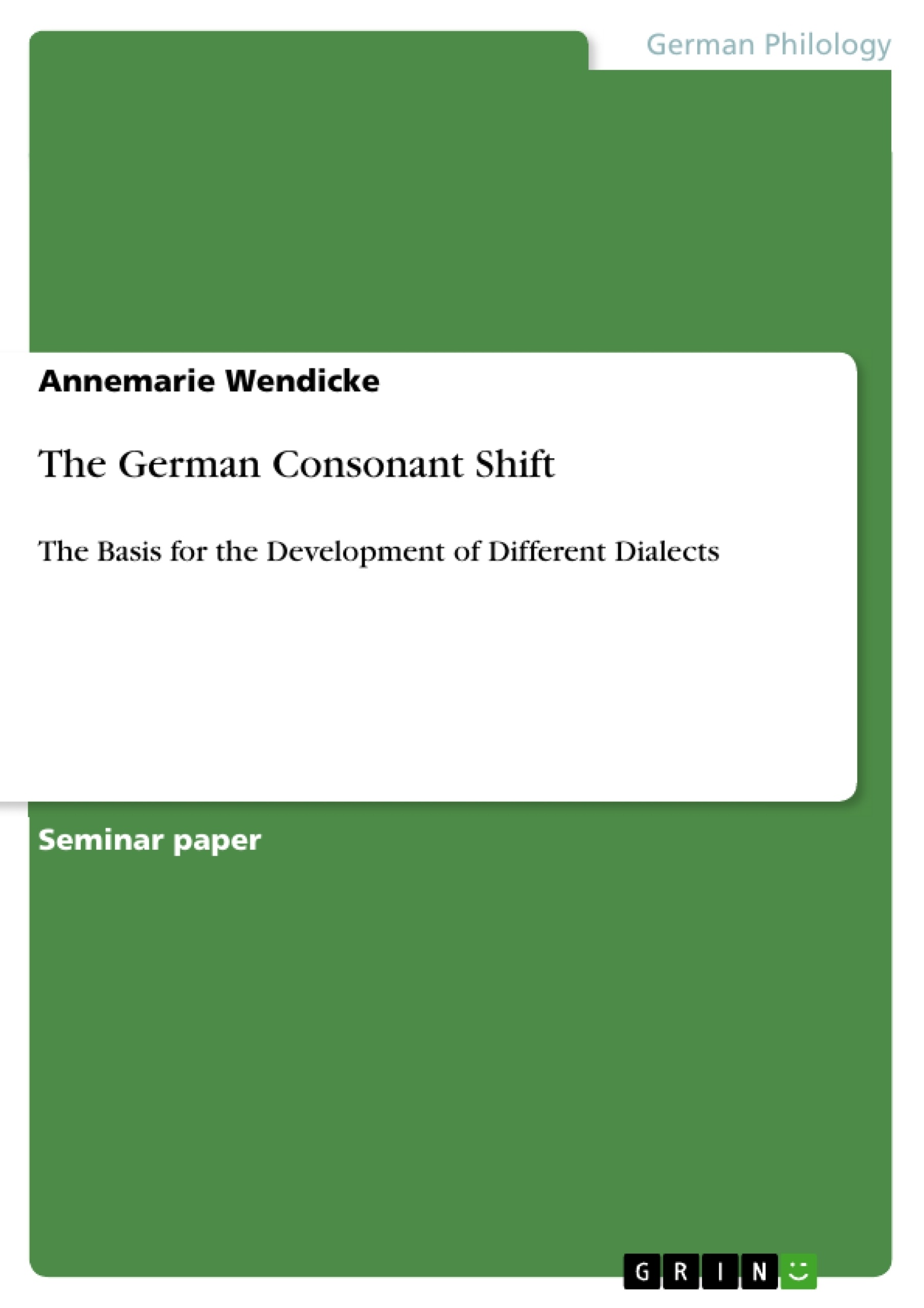The English language as well as the German language belongs to the Germanic branch of the Indo-European language family, which includes most of the languages spoken in Europe. All languages go through a process of change as human beings do the same. It happens very often that they are the reason for a change such as the introduction of spelling and pronunciation rules. Some languages are only affected by minor sound changes but the major sound changes affect all languages as it affects the people, who speak this language. For instance, although the German language was also affected by Grimm’s Law as it is the most famous sound law in the history of linguistics, they reason why the German language, especially High German, differs so much from Low German and other Indo-European languages is the High German consonant shift or what it is called in German “zweite Lautverschiebung.” Consequently, the High German consonant shift is responsible for the development of the different dialects in the German-speaking nations.
Inhaltsverzeichnis (Table of Contents)
- Introduction
- Discussion
- Grimm's Law
- The Second Consonant Shift
- Old High German Dialects
- Sound Changes in Southern German
- The “Maken/Machen” Line
- The “Mediae-Wandel”
Zielsetzung und Themenschwerpunkte (Objectives and Key Themes)
This text aims to explain the impact of the High German consonant shift on the development of different dialects within the German-speaking world. It explores the historical evolution of the shift, its effects on pronunciation, and its significance in differentiating High German from other Germanic languages, particularly Low German and English.- The High German consonant shift as a key factor in dialect formation.
- The impact of Grimm's Law on the development of Germanic languages.
- The differentiation of High German from Low German and other Indo-European languages.
- The specific sound changes associated with the High German consonant shift.
- The role of the "maken/machen" line as an isogloss bundle marking dialectal boundaries.
Zusammenfassung der Kapitel (Chapter Summaries)
- Introduction: This section introduces the topic of the High German consonant shift, highlighting its significance in the evolution of the German language and its dialects. It establishes the text's focus on explaining the development of distinct dialects within the German-speaking regions.
- Discussion: This chapter delves into the history of sound changes affecting Germanic languages, starting with Grimm's Law. It explains the various stages of Grimm's Law, outlining how Proto-Indo-European stops evolved into different sounds in Germanic languages. The chapter then introduces the High German consonant shift, highlighting its importance in differentiating German from other Germanic languages and its role in dialect formation.
- Grimm's Law: This section explains Grimm's Law in detail, tracing the evolution of Proto-Indo-European stops into different sounds in Germanic languages. It describes the various stages of the law, including the "Tenues-Spiranten-Wandel," "Mediae-Tenues-Wandel," and "Mediae aspiratae-Spiranten-Wandel."
- The Second Consonant Shift: This section discusses the High German consonant shift, which occurred after Grimm's Law, focusing on its impact on the development of different dialects within the German-speaking area. It presents different theories about the timing and geographical spread of the shift, highlighting the debate among researchers about its origins and evolution.
- Old High German Dialects: This section focuses on the influence of the High German consonant shift on the development of Old High German dialects. It highlights how the shift led to specific changes in the pronunciation of sounds like "p," "t," and "k," and explains how these changes contributed to the emergence of distinct dialects.
- Sound Changes in Southern German: This section explores specific sound changes that occurred in Southern German dialects, particularly in Bavaria, Alemannic, and East Franconia. It explains how these changes differed from the more widespread shifts affecting other High German dialects.
- The “Maken/Machen” Line: This section discusses the "maken/machen" line, an isogloss bundle that marks a boundary between different pronunciations of the same words. It highlights the significance of this line in identifying dialectal differences and separating High German from Low German dialects.
- The “Mediae-Wandel”: This section focuses on the impact of the "Mediae-Wandel" on the development of German dialects. It explains how this shift affected the consonants "b," "d," and "g," leading to further differentiation within the German-speaking area.
Schlüsselwörter (Keywords)
This text explores the impact of the High German consonant shift on the development of different dialects within the German-speaking world. It focuses on concepts such as Grimm's Law, sound changes, dialect formation, Old High German dialects, Southern German dialects, the "maken/machen" line, and the "Mediae-Wandel."- Quote paper
- Annemarie Wendicke (Author), 2008, The German Consonant Shift, Munich, GRIN Verlag, https://www.grin.com/document/135541




